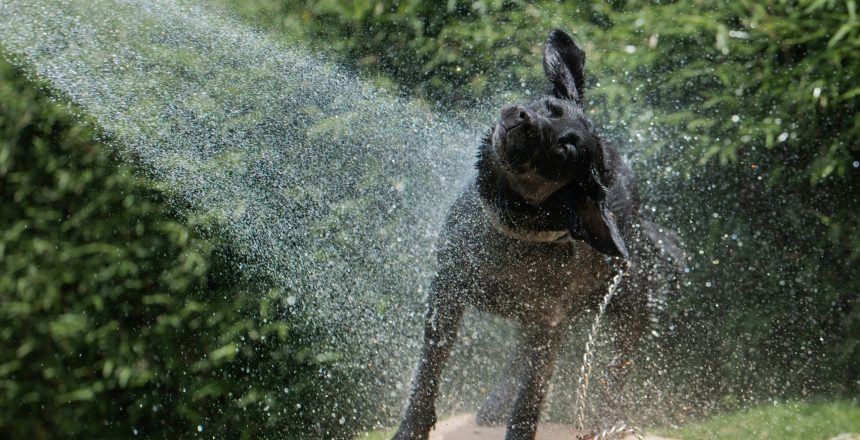
Summer has finally arrived with long days, sunshine, and endless opportunities for outdoor adventures with your four-legged friend. As the heat rises and more time is spent outdoors, however, so do the risks for our beloved pups. Whether you have a dedicated service dog or a cherished family pet, ensuring their safety and well-being during warm weather is paramount.
Here are tips to follow for a safe and paw-some summer:
1. Hydration is key. Always carry plenty of fresh water for both yourself and your dog, and offer frequent water breaks, especially during vigorous activities. If your dog enjoys going in water, consider a quick dip in a lake or kiddie pool to help regulate body temperature.
2. Swimming smarter, not harder. Always supervise your dog closely around water, and provide a well-fitted life jacket, particularly in deep or fast-moving water, or while on boats and paddleboards. Be mindful of currents, slippery surfaces, and unexpected stimuli (like boats or wildlife) as well.
3. Protect paws from hot surfaces. If you aren’t able to walk on asphalt or sand, remember it’s too hot for your dog’s paws, too. Try to walk your dog during cooler parts of the day, such as early morning or late evening, to avoid the potential for hot surfaces.
4. Beware of poisonous plants and chemicals. Dogs don’t inherently know which plants are toxic. Research common poisonous plants in your area and remove them from your yard. For a comprehensive list, check out our recent blog post. Any areas treated with herbicides, insecticides, or fertilizers should be avoided until completely dry, and store all chemicals, including citronella candles, out of your dog’s reach.
5. Always be identifiable. If your dog will be off-leash, ensure they have up-to-date identification tags. A microchip also provides an extra layer of security in case they wander off, but make sure your microchip registration information is current!
6. Never leave your dog in a hot car. This is a critical, life-threatening danger. Even on a seemingly mild day, the temperature inside a parked car can climb quickly. If possible, leave your dog at home if you can’t take them with you inside your destination.
7. Recognize the signs of overheating. Symptoms can include: excessive panting, difficulty breathing, drooling, weakness, staggering, vomiting, diarrhea, and seizures. If you suspect your dog is overheating, it’s best to contact your veterinarian immediately. Heatstroke can cause internal damage that isn’t immediately apparent.
Summertime might be a short season for many, but by following these essential safety measures and remaining mindful of your pup’s health, you can ensure it’s a time filled with joyful outdoor activities, sunshine, and the incomparable pleasure of each other’s company.
- Tags: Dog Care, Dogs Tips, Your Hearing Dog Inc.
